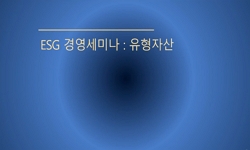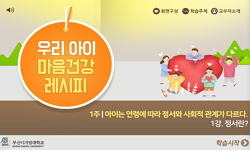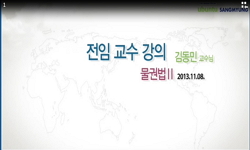Objectives: The purpose of this study was to examine the associations between parental warmth, negative reactions, parent-child attachment, and children’s disclosure to parents focusing on different domains of their daily activities. Methods: The p...
http://chineseinput.net/에서 pinyin(병음)방식으로 중국어를 변환할 수 있습니다.
변환된 중국어를 복사하여 사용하시면 됩니다.
- 中文 을 입력하시려면 zhongwen을 입력하시고 space를누르시면됩니다.
- 北京 을 입력하시려면 beijing을 입력하시고 space를 누르시면 됩니다.
https://www.riss.kr/link?id=A107115115
- 저자
- 발행기관
- 학술지명
- 권호사항
-
발행연도
2020
-
작성언어
Korean
- 주제어
-
KDC
598
-
등재정보
KCI우수등재
-
자료형태
학술저널
- 발행기관 URL
-
수록면
13-30(18쪽)
-
KCI 피인용횟수
1
- DOI식별코드
- 제공처
-
0
상세조회 -
0
다운로드
부가정보
다국어 초록 (Multilingual Abstract)
Methods: The participants were 240 children (120 3rd graders and 120 6th graders in elementary school) and their mothers in Seoul and Gangwon-do, South Korea. The data were analyzed with the t -test, structural equation modeling, and multiple group analysis.
Results: First, 3rd graders exhibited greater disclosure than 6th graders in most domains. Second, parental warmth and negative reactions had significant influences on children’s disclosure through parent-child attachment in the rule-breaking, friends, and personal domains but not in the school (institute) domain. Third, while negative parental reactions had a significant direct influence on children’s disclosure only in the rule-breaking domain, parental warmth did not have a significant direct influence in any of the domains. Fourth, grade differences in multigroup analysis were not confirmed.
Conclusion: The results of this study indicated that the aspects of children’s disclosure to parents differed according to the domains of daily activities based on their developmental stages. Also, parent-child attachment could be an important variable to increase children’s disclosure to parents. Disclosure to parents could be important for children in middle as well as late childhood. These results may serve as a foundational resource in developing programs related to the parent-child relationship to increase children’s disclosure.
Objectives: The purpose of this study was to examine the associations between parental warmth, negative reactions, parent-child attachment, and children’s disclosure to parents focusing on different domains of their daily activities.
Methods: The participants were 240 children (120 3rd graders and 120 6th graders in elementary school) and their mothers in Seoul and Gangwon-do, South Korea. The data were analyzed with the t -test, structural equation modeling, and multiple group analysis.
Results: First, 3rd graders exhibited greater disclosure than 6th graders in most domains. Second, parental warmth and negative reactions had significant influences on children’s disclosure through parent-child attachment in the rule-breaking, friends, and personal domains but not in the school (institute) domain. Third, while negative parental reactions had a significant direct influence on children’s disclosure only in the rule-breaking domain, parental warmth did not have a significant direct influence in any of the domains. Fourth, grade differences in multigroup analysis were not confirmed.
Conclusion: The results of this study indicated that the aspects of children’s disclosure to parents differed according to the domains of daily activities based on their developmental stages. Also, parent-child attachment could be an important variable to increase children’s disclosure to parents. Disclosure to parents could be important for children in middle as well as late childhood. These results may serve as a foundational resource in developing programs related to the parent-child relationship to increase children’s disclosure.
목차 (Table of Contents)
- Introduction
- Methods
- Results
- Discussion
- References
- Introduction
- Methods
- Results
- Discussion
- References
참고문헌 (Reference)
1 박영신, "중고등학교 청소년들의 부모에 대한 자기공개와 정보관리전략의 차이와 부모양육행동의 관계" 한국인간발달학회 22 (22): 29-47, 2015
2 이선희, "아동용 간편 5요인 성격검사 타당화 연구" 한국심리학회 30 (30): 543-569, 2011
3 Lauree C. Tilton-Weaver, "What's in a Name? Distinguishing Between Routine Disclosure and Self-Disclosure" Wiley 24 (24): 551-563, 2014
4 Tom Frijns, "What parents don't know and how it may affect their children: Qualifying the disclosure–adjustment link" Elsevier BV 33 (33): 261-270, 2010
5 Dorien Wuyts, "The role of observed autonomy support, reciprocity, and need satisfaction in adolescent disclosure about friends" Elsevier BV 65 : 141-154, 2018
6 Kwon, Y. H, "The relations between maternal parenting behaviors and children’s prosocial behaviors" Yonsei University 1995
7 Sun Woo, H. -J., "The effects of children’s temperament, maternal parenting behavior and children’s delay of gratification on aggression" 2008
8 Yoon, M., "The effects of children’s nonmaternal care experience and parenting self-efficacy on child-mother/father attachment" 2008
9 Hong, S. H., "The criteria for selecting appropriate fit indices in structural equation modeling and their rationales" 19 (19): 161-177, 2000
10 Oliver P. John, "The "Little Five": Exploring the Nomological Network of the Five-Factor Model of Personality in Adolescent Boys" Wiley 65 (65): 160-178, 1994
1 박영신, "중고등학교 청소년들의 부모에 대한 자기공개와 정보관리전략의 차이와 부모양육행동의 관계" 한국인간발달학회 22 (22): 29-47, 2015
2 이선희, "아동용 간편 5요인 성격검사 타당화 연구" 한국심리학회 30 (30): 543-569, 2011
3 Lauree C. Tilton-Weaver, "What's in a Name? Distinguishing Between Routine Disclosure and Self-Disclosure" Wiley 24 (24): 551-563, 2014
4 Tom Frijns, "What parents don't know and how it may affect their children: Qualifying the disclosure–adjustment link" Elsevier BV 33 (33): 261-270, 2010
5 Dorien Wuyts, "The role of observed autonomy support, reciprocity, and need satisfaction in adolescent disclosure about friends" Elsevier BV 65 : 141-154, 2018
6 Kwon, Y. H, "The relations between maternal parenting behaviors and children’s prosocial behaviors" Yonsei University 1995
7 Sun Woo, H. -J., "The effects of children’s temperament, maternal parenting behavior and children’s delay of gratification on aggression" 2008
8 Yoon, M., "The effects of children’s nonmaternal care experience and parenting self-efficacy on child-mother/father attachment" 2008
9 Hong, S. H., "The criteria for selecting appropriate fit indices in structural equation modeling and their rationales" 19 (19): 161-177, 2000
10 Oliver P. John, "The "Little Five": Exploring the Nomological Network of the Five-Factor Model of Personality in Adolescent Boys" Wiley 65 (65): 160-178, 1994
11 Browne, M. W., "Testing structural equation models" Sage 136-162, 1993
12 James C. Anderson, "Structural equation modeling in practice: A review and recommended two-step approach." American Psychological Association (APA) 103 (103): 411-423, 1988
13 Song, T., "Structural Equation Model for study of health and welfare research" Hannarae 2012
14 Loes Keijsers, "Reciprocal Effects Between Parental Solicitation, Parental Control, Adolescent Disclosure, and Adolescent Delinquency" Wiley 20 (20): 88-113, 2010
15 Kline, R. B., "Principles and practice of structural equation modeling" Guilford Publications 2015
16 Rah, Y., "Parental knowledge and monitoring of the daily activities of adolescents : Difference by grade in school" 23 (23): 89-104, 2002
17 Lauree Tilton-Weaver, "Open up or close down: How do parental reactions affect youth information management?" Elsevier BV 33 (33): 333-346, 2010
18 Robert D. Laird, "Negative reactions to monitoring: Do they undermine the ability of monitoring to protect adolescents?" Elsevier BV 63 : 75-84, 2018
19 Tom Frijns, "Longitudinal associations between keeping a secret and psychosocial adjustment in adolescence" SAGE Publications 33 (33): 145-154, 2009
20 Rachel C. Garthe, "Longitudinal Relations Between Adolescent and Parental Behaviors, Parental Knowledge, and Internalizing Behaviors Among Urban Adolescents" Springer Science and Business Media LLC 44 (44): 819-832, 2015
21 Catrin Finkenauer, "Keeping Secrets from Parents: Advantages and Disadvantages of Secrecy in Adolescence" Springer Science and Business Media LLC 31 (31): 123-136, 2002
22 Tom Frijns, "Keeping Secrets From Parents: Longitudinal Associations of Secrecy in Adolescence" Springer Science and Business Media LLC 34 (34): 137-148, 2005
23 Larry Nucci, "Japanese Adolescents' Disclosure and Information Management With Parents" Wiley 85 (85): 901-907, 2014
24 National Assembly Research Service, "International statistics: Trends and analysis (No. 1)" NARS 2019
25 Sheila K. Marshall, "Information management: Considering adolescents’ regulation of parental knowledge" Elsevier BV 28 (28): 633-647, 2005
26 Robert D. Laird, "Information management strategies in early adolescence: Developmental change in use and transactional associations with psychological adjustment." American Psychological Association (APA) 49 (49): 928-937, 2013
27 Crouter, A. C., "Handbook of parenting: Being and becoming a parent" Lawrence Erlbaum Association Publishers 461-484, 2002
28 Kim, Y., "Family counseling" Hakjisa 2007
29 Heo, Y. J., "Effects of separation experience from mother and characteristics of substitute care-givers on mother-child attachment" 2002
30 Judith G. Smetana, "Early and middle adolescents' disclosure to parents about activities in different domains" Elsevier BV 32 (32): 693-713, 2009
31 Jenny P. Yau, "Disclosure to Parents About Everyday Activities Among American Adolescents From Mexican, Chinese, and European Backgrounds" Wiley 80 (80): 1481-1498, 2009
32 Judith G. Smetana, "Disclosure and Secrecy in Adolescent-Parent Relationships" Wiley 77 (77): 201-217, 2006
33 Loes Keijsers, "Developmental changes in parent–child communication throughout adolescence." American Psychological Association (APA) 49 (49): 2301-2308, 2013
34 Alisa N. Almas, "Children's Disclosure and Secrecy: Links to Maternal Parenting Characteristics and Children's Coping Skills" Wiley 20 (20): 624-643, 2011
35 Myriam Villalobos Solís, "Associations among solicitation, relationship quality, and adolescents' disclosure and secrecy with mothers and best friends" Elsevier BV 43 : 193-205, 2015
36 Wendy M. Rote, "Associations Between Observed Mother-Adolescent Interactions and Adolescent Information Management" Wiley 22 (22): 206-214, 2012
37 Slater, M. A., "Advances in family interaction, assessment and theory" JAI Press 197-228, 1987
38 Laura M. Padilla-Walker, "A longitudinal growth mixture model of child disclosure to parents across adolescence." American Psychological Association (APA) 32 (32): 475-483, 2018
39 Ministry of Education, "2019nyeon 1cha haggyopoglyeog siltaejosa gyeolgwa balpyo [2019년 1차 학교폭력 실태조사 결과 발표]"
40 Korea Information Society Development Institute, "2018hangugmidi-eopaeneoljosa [한국미디어패널조사]" KISDI 2018
41 Ministry of Gender Equality and Family, "2017nyeon cheongsonyeonjonghabsiltaejosa [2017년 청소년종합실태조사]" Ministry of Gender Equality and Family 2017
42 Korea Institute of Child Care and Education, "2017 Yuagyo-yug bo-yug ju-yotonggye [유아교육 보육 주요통계]" KICCE 2018
43 Kim, E., "2015nyeon jeongukboyuksiltaejosa-Gagujosa bogo-[2015년 전국보육실태조사-가구조사 보고-]" Ministry of Health and Welfare 2016
동일학술지(권/호) 다른 논문
-
- 한국아동학회
- Kai-Sook Chung(정계숙 )
- 2020
- KCI우수등재
-
유아의 글 없는 그림책 읽기 반응과 이야기 이해: 또래와의 협동과 경쟁 읽기 비교
- 한국아동학회
- 최지수(Ji-Su Choi )
- 2020
- KCI우수등재
-
중학교 1학년 또래 관계가 스마트폰 과의존에 미치는 영향: 스마트폰 목적별 이용 정도에 따른 다집단 분석
- 한국아동학회
- 김대웅(Daewoong Kim)
- 2020
- KCI우수등재
-
학습자의 흥미가 교사의 교수의도와 다를 때: 유아의 학습의도와 학습결과에 대한 예측
- 한국아동학회
- 정지인(Jeein Jeong)
- 2020
- KCI우수등재
분석정보
인용정보 인용지수 설명보기
학술지 이력
| 연월일 | 이력구분 | 이력상세 | 등재구분 |
|---|---|---|---|
| 2022 | 평가예정 | 계속평가 신청대상 (등재유지) | |
| 2017-01-01 | 평가 | 우수등재학술지 선정 (계속평가) | |
| 2013-01-01 | 평가 | 등재학술지 유지 (등재유지) |  |
| 2010-01-01 | 평가 | 등재학술지 유지 (등재유지) |  |
| 2008-01-01 | 평가 | 등재학술지 유지 (등재유지) |  |
| 2006-01-01 | 평가 | 등재학술지 유지 (등재유지) |  |
| 2005-03-22 | 학술지명변경 | 외국어명 : 미등록 -> Korean Journal of Child Studies |  |
| 2003-01-01 | 평가 | 등재학술지 선정 (등재후보2차) |  |
| 1998-07-01 | 평가 | 등재후보학술지 선정 (신규평가) |  |
학술지 인용정보
| 기준연도 | WOS-KCI 통합IF(2년) | KCIF(2년) | KCIF(3년) |
|---|---|---|---|
| 2016 | 1.76 | 1.76 | 1.79 |
| KCIF(4년) | KCIF(5년) | 중심성지수(3년) | 즉시성지수 |
| 1.85 | 1.77 | 2.219 | 0.21 |





 DBpia
DBpia






